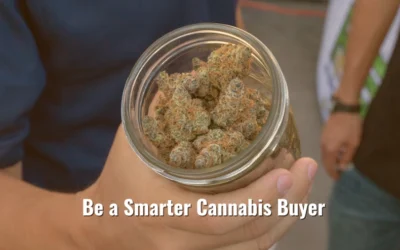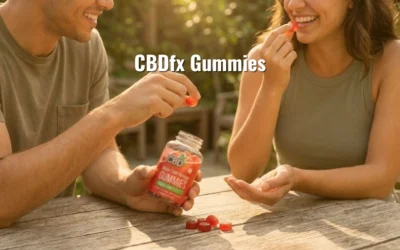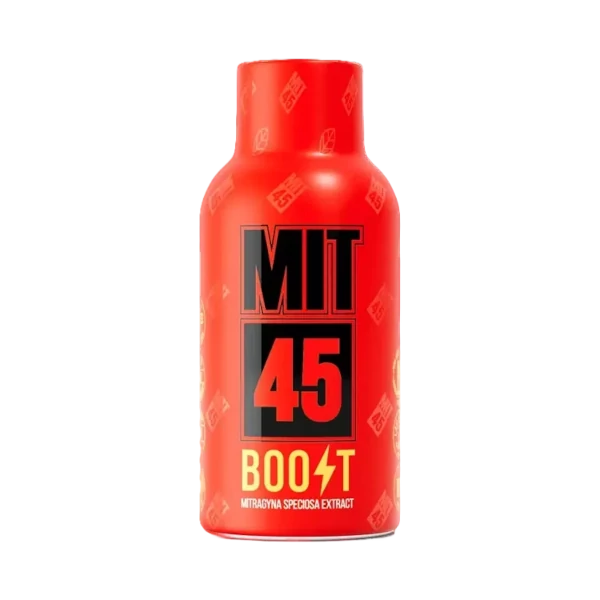One of cannabis’s most overlooked strengths is how naturally it moderates itself. A couple of puffs can be enough. One small bowl can set the tone for an evening. And unlike alcohol, where the pressure is to finish your drink, cannabis makes it easy to pause and save the rest for later.
That pause is not merely convenient; it’s part of our culture. What some call cannabis leftovers has always been normal. People have always used cannabis in rhythms instead of binges, spacing out the experience rather than cramming it into one sitting. It’s one of the reasons cannabis adapts so well to different settings: a hit before dinner, a hit after, and nothing forcing you to cross the line if you don’t want to.
This built-in pacing is what makes cannabis different from almost every other product people reach for. Because cannabis doesn’t push you toward more, it gives you room to decide when “enough” is enough. And in that space, something interesting has always been happening: a pattern that looks a lot like the modern trend of microdosing cannabis, even though cannabis culture never needed to call it that.
Blog Summary:
Most people think of “leftovers” as cold pizza or yesterday’s coffee. But in cannabis, the story is different. In this blog, we’ll explore:
- Why stopping short has always been more common than finishing.
- How sharing rituals shaped the habit of saving what’s left.
- The chemistry that explains why a relit joint feels different.
- What modern science now calls the practice people have done for decades.
- The perks of leftovers for tolerance, budget, and clarity.
- How the right products can turn “what’s left” into “what lasts.”
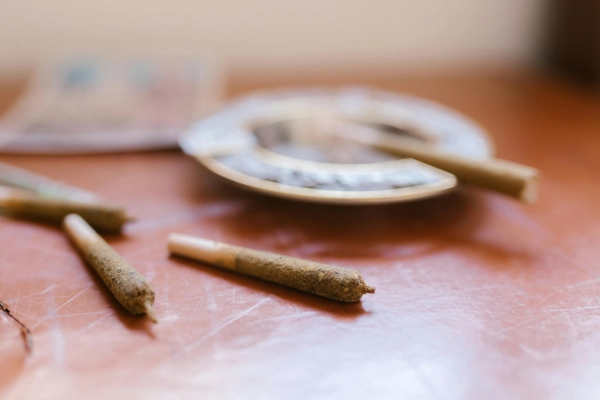
Table of Contents:
- Why Leftovers Are Normal
- The Culture of Sharing
- The Science of Relighting
- Microdosing Cannabis Before It Had a Name
- Built-In Tolerance Control
- The Economics of Leftovers
- Functional Benefits
- Making Leftovers Work for You
Why Leftovers Are Normal
When you look at how people consume cannabis, the story is clear: finishing everything in one sitting is far less common than you’d think. A study published on ResearchGate explored different ways to measure cannabis use, including hits per day, grams per week, and joints per week. What stood out was that many frequent users described their consumption in hits, not in grams or whole joints. That detail might seem small, but it points to something bigger: people measure their use in smaller, incremental amounts.
New Frontier Data has also found that not everyone even consumes daily. A large share of Americans use cannabis occasionally, ranging from once a week to once a year. In those cases, sessions tend to be lighter by design. You don’t need a gram to yourself when you’re simply looking for a manageable shift after work or a weekend social buzz. Which means the leftover half-joint or unfinished bowl is baked into how most people actually use cannabis.
There’s logic behind this. After a few hits, your body gives you feedback: you know whether the effect has landed, whether you want to keep going, or whether it’s time to stop. Cannabis invites that decision in a way alcohol, let’s say, doesn’t. Nobody puts down a half-poured cocktail to revisit the next night, but with cannabis, stopping short feels normal, even smart. And that leftover isn’t hesitation or waste. It’s simply the plant fitting itself into your pace, not the other way around.
The Culture of Sharing
Cannabis leftovers don’t just happen in solo sessions when microdosing cannabis. They’ve always been part of how people share the plant. In a circle, not everyone takes the same number of hits. Some pass after one, some after three, and others sit back without finishing at all. And what’s left behind is simply the byproduct of a culture built on passing and pacing.
No two people in a group have the same tolerance, the same mood, or the same reason for lighting up. If you think about it, I’m sure you have noticed before. That difference naturally creates leftovers. The joint keeps moving, but people decide when they’ve had enough. Sometimes it comes back with half left, sometimes just a few crumbs in the bowl. Either way, cannabis has always allowed that flexibility in a shared setting.
And that is precisely the point. In most social rituals, there’s pressure to keep up: to match rounds of drinks, to finish a plate, to keep pace with the group. Cannabis breaks that pattern. It lets each person set their own rhythm while still staying part of the moment. Leftovers are proof of that dynamic.
The Science of Relighting
Anyone who’s ever picked up a half-joint the next day knows it doesn’t hit quite the same. That shift is the result of chemistry, not your imagination. When cannabis is first burned, the heat and air kick off a cascade of changes. As it has been seen in lab studies, THC degrades into CBN under exposure to heat, oxygen, and light, which is why the leftovers feel heavier, calmer, and often more sedating than they did the first time around.
At the same time, the plant’s terpenes begin to deteriorate with time. Again, light, oxygen, and even moderate heat affect how those aromatic compounds behave. Over time, the joint or bowl you relight carries fewer of those subtle notes and may taste harsher or feel denser in effect.
But those changes aren’t always bad. What feels “weaker” to some might just be a “different” appeal for others, with effects leaning more toward relaxation or sleepiness. If your leftover comes back with a calmer vibe, that’s chemistry doing what culture has quietly known for years.
Microdosing Cannabis Before It Had a Name
The word “microdosing” gets thrown around a lot these days, usually tied to psychedelics or clinical research. In medical cannabis, the term typically means a dose in the range of 2.5 to 5 milligrams of THC, which is just enough to create a noticeable shift without tipping into a full thing. Researchers and physicians often recommend this approach for patients who want symptom relief while staying clear-headed.
The interesting part is that many cannabis leftovers naturally line up with that range. A couple of puffs from a relit joint often deliver the same few milligrams that qualify as a microdose in the medical literature. And people have been doing it for decades without naming it or measuring it.
That means the practice of stopping short, saving part of your pre-roll, is one of the oldest forms of microdosing cannabis. What looks casual or even unintentional is actually a rhythm that science now validates. And if you want to see where this practice is heading, from its roots in tech circles to new cannabis innovations on the horizon, check out our blog on microdosing edibles in 2025.
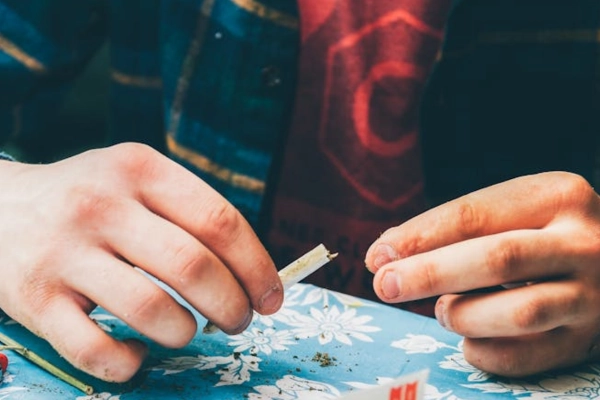
Built-In Tolerance Control
One of the biggest challenges for regular cannabis users is tolerance. The more you consume in a single sitting, the faster your body adjusts, and the less noticeable the effects feel over time. That cycle is why people often find themselves needing stronger strains or larger doses just to reach the same point.
Leftovers can change that rhythm. By pausing halfway through, you naturally break the pattern of heavy, all-at-once intake. Instead of flooding your endocannabinoid system in one go, you’re spacing out smaller, more manageable doses. Each pause gives your receptors time to reset, which can help preserve sensitivity over the long run.
In the real world, this is as simple as the act of saving part of your THCA flower. A half-smoked joint today and the rest tomorrow delivers two lighter experiences instead of one overwhelming one, and your system responds better as a result. Over time, those smaller sessions add up. Less chasing. Less need for escalation. And more control over how cannabis feels in your day-to-day.
The Economics of Leftovers
If there is one thing we are pretty certain that people love more than cannabis is a good deal. Cannabis isn’t cheap, and anyone who consumes regularly knows how fast jars and pre-rolls can disappear. The habit of saving part of a session isn’t just about pacing your experience; it stretches your budget, too.
It also changes how you shop. When you know leftovers are part of your rhythm, you stop chasing the biggest dose for the lowest price (We do have some snowcaps, however, that might interest you). Instead, you look for quality that can be enjoyed in pieces, meaning a THCA flower with strong terpene presence, for example, which keeps its character even when relit.
And that adds up. If you’re finishing less per session, you buy less overall. Not because you’re cutting back, but because you’re using cannabis the way it’s designed to be used: in smaller, more intentional amounts. What some see as a leftover is really a built-in strategy for making your stash and your money last longer.
Functional Benefits
Every session has its own intents, and not all of them need to knock you sideways. Sometimes you just want to take the edge off by microdosing cannabis, find focus, or keep things light without stepping out of your day. Cannabis leftovers fit perfectly into that space. By saving part of your flower, you build in smaller sessions that deliver clarity and calm without tipping into full sedation.
This pacing is especially useful when life keeps moving. A couple of hits before a meeting, half a bowl before dinner, and the rest when the night slows down. Leftovers give you options. You stay present and functional instead of battling an overpowering high.
It also helps avoid the familiar cycle of overconsumption. Anyone who’s finished a whole joint just because it was there knows the cannabis hangover that follows. Leftovers break that reflex. They let you stop when you’ve had enough and return later on your own terms.
Making Leftovers Work for You
What makes cannabis different isn’t just its chemistry or its culture. What makes cannabis different it’s how naturally it adapts to you. Every leftover you have ever had is a reminder that cannabis gives you control instead of demanding more. That’s by design.
If you think about it, the products that work best as leftovers are the ones built with character. A THCA flower with strong terpene presence, a pre-roll that holds its flavor when relit, or a craft strain that still carries nuance the second time around. These are experiences you can stretch, revisit, and actually make last.
That’s why we’ve curated our online shop with options meant to perform even after the first spark. Each pick is chosen for quality that carries through, so when you come back to it later, it still feels intentional. Cannabis that fits into your rhythm, not the other way around.



